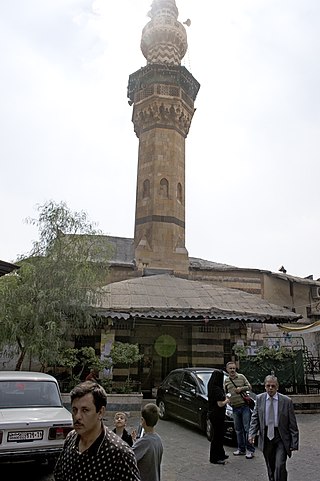
Damascus is the capital and largest city of Syria, the oldest current capital in the world and, according to some, the fourth holiest city in Islam. Known colloquially in Syria as aš-Šām (الشَّام) and dubbed, poetically, the "City of Jasmine", Damascus is a major cultural center of the Levant and the Arab world.

This is a timeline of major events in the history of Jerusalem; a city that had been fought over sixteen times in its history. During its long history, Jerusalem has been destroyed twice, besieged 23 times, attacked 52 times, and captured and recaptured 44 times.
The following is a timeline of the history of the city of Beirut, Lebanon.
The following is a timeline of the history of the city of Cairo, Egypt.
The following is a timeline of the history of the city of Tunis, Tunisia.
The following is a timeline of the history of the city of Aleppo, Syria.
The following is a timeline of the history of the city of Alexandria, Egypt.
The following is a timeline of the history of the city of Tripoli, Libya.

The following is a timeline of the history of the city of Bursa, Turkey.
The following is a timeline of the history of the city of Hama, Syria.
The following is a timeline of the history of Kabul, Afghanistan.
The following is a timeline of the history of the city of Ankara, Ankara Province, Turkey.
The following is a timeline of the history of the city of Baghdad, Iraq.
The following is a timeline of the history of the city of Fez, Morocco.
The following is a timeline of the history of the city of Latakia, Syria.
The following is a timeline of the history of the city of Baku, Azerbaijan.
The following is a timeline of the history of the city of Muscat, Oman.
The following is a timeline of the history of the city of Mashhad, Iran.
The following is a timeline of the history of the city of Homs, Syria.

The Salimiyya Takiyya is a takiyya in as-Salihiyya, Damascus.







